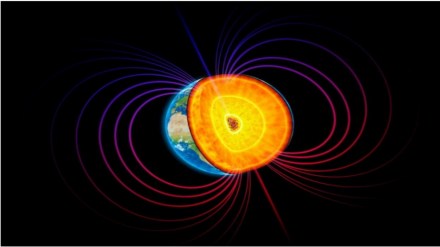By Dr Ajey Lele
The Space Weather Prediction Center (SWPC), a laboratory and service center of the US National Weather Service, part of the National Oceanic and Atmospheric Administration (NOAA) has issued a warning on March 24, 2024, that a severe G4 Geomagnetic Storm has hit Earth on Sunday. At present, this storm is impacting mostly the region above the Earth’s atmosphere and is marking a severe escalation in space weather conditions. As per NOAA, there would be an intense geomagnetic activity with potential wide-reaching impacts on both technology and natural phenomena. Mainly, there could be issues with voltage control systems and dangers to power grids. Also, mainly the satellites in the Low Earth Orbits (LEO) are expected to face some difficultness in operations.
Like various other natural phenomena like say Earthquakes, where the intensity is measured in the Richter scale (measure of the strength), the NOAA has developed a Space Weather Scale too. This scale categorizes the severity of space weather events. There are five levels of geomagnetic storms, G1 (Minor) to G5 (Extreme) and as per this calcification the present storm looks a bit dangerous. It is important to note that predicting space weather is a very challenging job. In case of the present storm, initially the forecast was indicative that this storm could be a category 1 or 2 storm. However, finally when it approached the Earth, it was declared as type G4. This clearly indicates that we need to know much more in regard to understanding the vagaries of space weather.
In recent times, during February 2022, Elon Musk’s SpaceX had lost around 40 satellites after they were hit by a geomagnetic storm a day after launch, causing them to fall from orbit and burn up. In the past also, there have been some similar cases. Mainly, the satellites in the LEO are known to experience an enhanced drag. This disturbs their trajectories and for Earth stations, it becomes difficult to track them and undertake orientation changes. On the other hand, the visual manifestation of such storms is very interesting. Presently, it is expected that the travellers in the Northern and Southern Hemisphere will be able to see a natural phenomenon called the Aurora Borealis or Northern Lights.
Geomagnetic storms impacting commutations is not a new phenomenon. One of the most famous great geomagnetic storms is the storm during 13–16 May 1921. It had a huge impact on Telegraph service in the US. The initial impact of the storm led to the slowing down of the services and finally everything stopped owing to fuses and switches getting blown off. Radio propagation was enhanced during the storm due to changes in the characteristics of the ionosphere. It was noticed that undersea telegraph cables were also impacted by the storm. Beyond the US, the impact on telegraph services was also visible in Europe and the Southern Hemisphere.
Adverse space weather impacts various human positioned systems in space and also systems operating in the vicinity of the Earth. History shows that the strong Geomagnetic storms could lead to inducing currents in pipelines or the transmission lines of the power grid. All this leads to impacting the transformer performance and thus people experiencing electric outages. Also, there is a possibility of the aircrafts flying in higher altitudes getting exposed to increased radiation. This may lead to impacting the health of aircrew and passengers. Beyond LEO, even satellites present in other orbits like the GPS satellites could get impacted by adverse space weather. Usually, for satellites in higher orbits, the most significant space weather hazard is high energy charged particles. There have also been insistences of adverse space weather impacting commutations satellites.
For some years now, dedicated research has been happening in the area of space weather. The US has taken a lead and other countries like Russia, China, UK, Canada, Australia and India are also in the forefront of this research. The SOHO (Solar and Heliospheric Observatory) spacecraft was launched during 1995. This is a European Space Agency (ESA) and National Aeronautics and Space Administration (NASA) collaborative mission. SOHO studies the sun, its structure and dynamics of its interior and collects observations about solar winds, plasma, solar particles etc. All these observations help towards understanding more about the Sun and also help in predicting the space weather. On 06 Jan 2024, ISRO placed Aditya L1 satellite into the halo orbit to study the Sun. It would be of interest to the type and nature of information collected by Aditya L1 satellite in recent times and how useful it was for predicting this present geomagnetic storm of G4 intensity.
The author is a Deputy Director General, MP-IDSA, New Delhi.
Disclaimer: Views expressed are personal and do not reflect the official position or policy of Financial Express Online. Reproducing this content without permission is prohibited.
